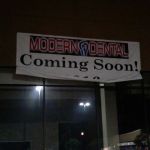
How to Care for Your Teeth After a Tooth Extraction: Essential Aftercare Tips
Having a tooth extracted is never fun, and I’ve been through it myself. I vividly remember the anxiety I felt leading up to the procedure. After the tooth was removed, I was faced with the task of managing my recovery and ensuring my mouth healed properly. I quickly learned that taking proper care of my teeth and gums after a tooth extraction was just as important as the extraction itself. In this article, I’ll share my personal experience and walk you through the most effective ways to care for your teeth after a tooth extraction, so you can heal as quickly and comfortably as possible.
1. Follow Your Dentist’s Instructions Carefully
One of the most important things I learned during my recovery is how crucial it is to follow the instructions provided by my dentist. After my extraction, I was given a detailed list of aftercare guidelines. At first, I was a bit overwhelmed by all the dos and don’ts, but trust me, these instructions are there for a reason. I made sure to follow every step carefully, including when to take pain medication, how to clean my mouth, and when to follow up for a check-up. By sticking to these guidelines, I minimized the risk of complications and helped my mouth heal faster.
2. Bite on a Gauze Pad to Control Bleeding
When I had my tooth removed, the dentist placed a gauze pad over the extraction site to help stop the bleeding. I was instructed to bite down gently on the pad for about 30 to 45 minutes right after the procedure. This helps the blood clot form, which is critical for the healing process. I remember being surprised by how much bleeding there was initially, but the gauze helped to manage it. If the bleeding didn’t stop after an hour, my dentist advised me to replace the gauze with a fresh one and continue biting down. This gave me peace of mind during the first few hours after the extraction.
3. Avoid Strenuous Activity
After the extraction, I was tempted to get back to my regular routine, but I quickly learned that resting was key to a smooth recovery. The first 24 to 48 hours after a tooth extraction are critical for healing. I avoided any strenuous physical activities, like exercising or lifting heavy objects, because it can cause increased blood pressure and disrupt the healing process. Even though I was eager to get back to my normal life, I took it easy, followed my dentist’s advice to rest, and gave my body the time it needed to heal.
4. Manage Pain and Swelling with Ice Packs
After the procedure, I experienced some swelling around my jaw and discomfort in the extraction area. To manage this, my dentist recommended using an ice pack. I wrapped the ice in a towel and applied it to the outside of my face, near the extraction site. The cold helped reduce swelling and numb the pain. I applied the ice for 20 minutes at a time, resting it off for 20 minutes in between. This method helped me stay comfortable during the first few days after the extraction and prevented the swelling from getting worse.
5. Stick to Soft Foods and Avoid Chewing on the Extraction Side
One of the biggest adjustments I had to make after my tooth extraction was changing my diet. For the first few days, I ate only soft foods like mashed potatoes, smoothies, and soups to avoid irritating the extraction site. I made sure to chew on the opposite side of my mouth to avoid putting pressure on the healing area. Even though I was craving crunchy or spicy foods, I knew it was important to stick to the soft food rule to prevent any damage or infection to the extraction site. As my recovery progressed, I gradually reintroduced solid foods, but I was cautious about chewing too hard.
6. Keep Your Mouth Clean, But Avoid Rinsing Too Soon
Keeping your mouth clean is essential for preventing infection after a tooth extraction, but I learned that I had to wait at least 24 hours before rinsing my mouth. This was because I needed to give the blood clot time to form and stabilize. After 24 hours, I gently rinsed my mouth with warm salt water to keep the extraction site clean. The saltwater helped reduce bacteria and soothed the area. I made sure to avoid vigorous swishing or using mouthwash that contains alcohol, as this could irritate the healing tissue and dislodge the blood clot.
7. Avoid Smoking and Drinking Through a Straw
As someone who enjoys a good cup of coffee, I was tempted to grab my drink through a straw right after the extraction. However, I quickly learned that this could be harmful to the healing process. The suction created by drinking through a straw can disturb the blood clot, leading to a condition called dry socket, which is incredibly painful. I made sure to avoid smoking as well, as the act of smoking can also dislodge the clot and increase the risk of infection. Although it was hard to resist these habits, following this advice was crucial to avoiding complications.
8. Take Your Medications as Directed
After my extraction, my dentist prescribed painkillers and antibiotics to help manage the pain and prevent infection. It was important for me to take these medications exactly as instructed. I made sure to take the pain relievers on time, as prescribed, to keep discomfort at bay. I also finished the entire course of antibiotics, even if I started feeling better, to prevent any infection from developing. Sticking to the prescribed medication schedule helped me heal without unnecessary pain or complications.
9. Be Patient and Monitor for Any Signs of Complications
Healing after a tooth extraction takes time, and I had to be patient with the process. Although I felt much better after the first few days, it took several weeks for the extraction site to fully heal. During this time, I kept an eye out for any signs of complications, such as excessive bleeding, unusual swelling, or severe pain that didn’t subside with medication. If I experienced anything abnormal, I contacted my dentist right away. It’s important to keep an open line of communication with your dental provider to ensure a smooth recovery process.
Caring for your teeth after a tooth extraction may seem daunting at first, but by following the right steps, you can make the process easier and more comfortable. From managing pain and swelling to sticking to a soft-food diet, these tips helped me recover without complications. If you're preparing for a tooth extraction or need personalized advice, be sure to consult your dentist. For trusted recommendations and dental care services, visit Dentistry Toothtruth, where you can find the best professionals for your dental needs.







 UI Health Mile Square Health Center - Primary and Immediate Care3.0 (13 review)
UI Health Mile Square Health Center - Primary and Immediate Care3.0 (13 review) Barrett Dental Care4.0 (221 review)
Barrett Dental Care4.0 (221 review) Dr. Mia L. Ancheta - San Angel Dental3.0 (26 review)
Dr. Mia L. Ancheta - San Angel Dental3.0 (26 review) Modern Dental3.0 (148 review)
Modern Dental3.0 (148 review) Advanced Care In Endodontics5.0 (345 review)
Advanced Care In Endodontics5.0 (345 review) Pearl Family Dental Care4.0 (123 review)
Pearl Family Dental Care4.0 (123 review) The Importance of Oral Health Education During Pregnancy for a Healthy Pregnancy
The Importance of Oral Health Education During Pregnancy for a Healthy Pregnancy Best Tips for Brushing Your Teeth Properly for Healthy Gums: Essential Techniques for Oral Health
Best Tips for Brushing Your Teeth Properly for Healthy Gums: Essential Techniques for Oral Health Why Skipping Dental Checkups Can Lead to Bigger Oral Health Problems
Why Skipping Dental Checkups Can Lead to Bigger Oral Health Problems Advantages of Porcelain Dental Restorations
Advantages of Porcelain Dental Restorations How Can Diabetes Cause Tooth and Gum Problems? Preventing and Managing Oral Health Issues
How Can Diabetes Cause Tooth and Gum Problems? Preventing and Managing Oral Health Issues Healthy Habits for Promoting Good Oral Health and Hygiene: Tips for a Healthy Smile
Healthy Habits for Promoting Good Oral Health and Hygiene: Tips for a Healthy Smile